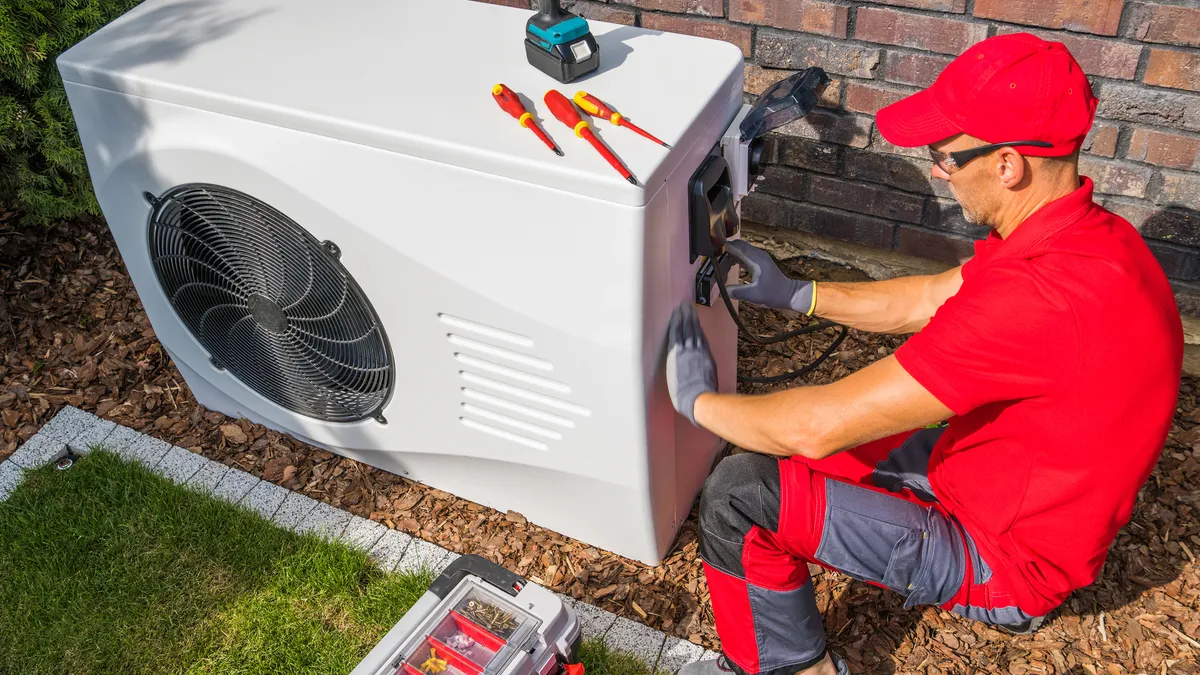Chris Badger is a managing consultant at clean energy nonprofit VEIC
When people think of climate solutions, heat pump water heaters, or HPWH, are rarely at the top of their list. Although water heaters account for a quarter of the natural gas consumption of the average home, homeowners rarely consider upgrades in emergency situations where restoring hot water takes priority over more climate-friendly options. This presents a significant challenge to decarbonizing homes.
Even in states like California — which has aggressive energy efficiency targets and a goal of installing 6 million heat pumps by 2030 — natural gas systems account for nearly all water heater replacements. TECH Clean California wants to change that. But they're not banking on one solution; they're testing many.
TECH Clean California is a market transformation initiative accelerating space heat pumps and heat pump water heating adoption statewide. For the initiative, it's not just about installing 6 million heat pumps; it's about engaging directly with communities so that residents of all backgrounds can access the benefits of the technology.
One way TECH Clean California engages with communities is through the Quick Start Grant program, administered by the clean energy nonprofit VEIC. These grants fund innovative pilots that test approaches to overcoming market barriers for heat pump HVAC and HPWH adoption. TECH Clean California’s pilot approach enables program administrators like utilities and state energy offices to adopt and scale solutions in California and nationwide.
These grants were just the thing a local plumbing company needed to test their unconventional decarbonization solution: lending gas water heaters.
One of the main reasons residents don’t switch to HPWHs in emergency replacement scenarios is that it can take time to prepare a site for an electrical appliance. Residents need to pull together funds, complete any necessary electrical panel and wiring upgrades, navigate state incentives, and gather permitting in a short period of time.
Barnett Plumbing addressed this obstacle head on. Using funding from the Quick Start Grant, they designed a first-of-its-kind offering to customers for a temporary replacement with a loaner gas water heater at no cost if they commit to purchasing a HPWH. This solution provided a quick, simple way to restore hot water for homeowners during their HPWH upgrade.
The loaner program’s conversion rates are a testament to its success. Before the loaner program, only 1% of customers opted to install HPWHs during emergency replacements. With the loaner offer in place, that adoption rate jumped to 17%.
Participants also saw immense benefits in this program. One participant reported that when his water heater broke, he called Barnett Plumbing because of their strong local reputation. Once he heard about the loaner program, he decided to try it out and remarked, “It was a painless process.”
Without a knowledgeable plumber, gas loaner, and HPWH incentives, many participants would not be able to enjoy the financial and environmental benefits of HPWH technology. It's still too early to say if gas loaners are a scalable program opportunity across the nation, but its early success demonstrates the impact of an innovative new solution.
Process changes are not the only innovations that Quick Start Grants test. Another pilot funded by TECH Clean California investigated whether new technology could remove the burden of heavy planning and retrofit electrical work that is often required for HPWH installations. The New Buildings Institute, or NBI, used grant funding to conduct a field test of emerging plug-in 120 volt HPWH technology. If this new technology is a viable option for residents, it can open a world of access since people could use standard outlets to power HPWHs. This saves residents time and money on electrical upgrades and rewiring, which are both major considerations during emergency water heater replacements.
NBI installed plug-in 120V HPWHs at 32 sites within a diverse set of homes in different climate regions of California. After completing this work, NBI found the technology was able to meet the needs of lower-demand households of one to three people. With these encouraging results, many energy efficiency and incentives programs are now incorporate plug-in 120V HPWHs, offering households a more affordable water heating solution.
During NBI's field evaluation, Barnett Plumbing also tested plug-in 120V HPWH models, starting with their own technicians’ homes. It was so effective, the team integrated plug-in 120V HPWHs into their offerings, increasing adoption rates to over 50%.
The impact of small grants on spurring testing of new technologies and approaches underscores exactly why programs like TECH Clean California are vital to scaling climate solutions. By dispersing innovation, we can hedge our bets and leave space to adapt to new barriers as they arise. When we continuously improve available climate solutions, we can create a pathway to scale heat pump HVAC and HPWH technology even faster.
In VEIC’s work with the TECH Clean California initiative, we have heard from dozens of organizations and businesses that reflect on the impact of their Quick Start Grant. Time and time again, they report that one of the biggest challenges for getting new ideas off the ground is the absence of consistent funding with the flexibility to adapt to their specific needs. Through the support of TECH Clean California, local groups can take risks and experiment knowing they have time to learn and adapt their solutions to achieve the best outcomes.
It’s hard to know how quickly California will reach its ambitious heat pump goals. But these pilot programs leave little doubt that to succeed, innovators require a clear runway to takeoff.






















